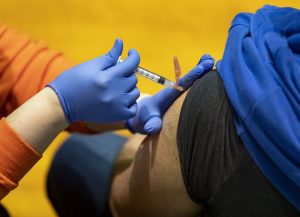The latest
Animals likely source of COVID, WHO report says
A joint WHO-China study on the origins of COVID-19 says that transmission of the virus from bats to humans through another animal is the most likely scenario and that a lab leak is “extremely unlikely,” according to a draft copy obtained by The Associated Press.
The findings offer little new insight into how the virus first emerged and leave many questions unanswered, though that was as expected. But the report does provide more detail on the reasoning behind the researchers’ conclusions. The team proposed further research in every area except the lab leak hypothesis.
The report, which is expected to be made public Tuesday, is being closely watched since discovering the origins of the virus could help scientists prevent future pandemics — but it’s also extremely sensitive since China bristles at any suggestion that it is to blame for the current one. Repeated delays in the report’s release have raised questions about whether the Chinese side was trying to skew its conclusions.
“We’ve got real concerns about the methodology and the process that went into that report, including the fact that the government in Beijing apparently helped to write it,” U.S. Secretary of State Antony Blinken said in a recent CNN interview. China rejected that criticism Monday.
Read the full Associated Press story here.
New cases and vaccinations
- The latest tally of reported cases in Illinois is 2,250, diagnosed from 65,729 tests, bringing the state’s seven-day positivity rate to 3.2%. That’s the highest average recorded since Feb. 11, according to the Illinois Department of Public Health.
- Over the past two weeks, the statewide positivity rate has slowly increased from a record low of 2.1% recorded on March 13.
- Hospitalizations have also ticked upward over the past two weeks, with COVID-19 patients occupying 1,337 beds on Saturday night. Of those, 269 were hospitalized in intensive care units and 107 patients required ventilators.
- Officials on Sunday also reported 23 deaths linked to COVID-19, including seven people from Cook County. That brings the state’s total death toll to 21,251.
- Meanwhile, as vaccine supply has increased and inoculations have become more widely available, another 110,211 shots went into arms on Saturday. Over 6.2 million vaccine doses have been sent to providers in Illinois and more than 2 million residents have now been fully vaccinated, officials said.
Analysis and commentary
7:43 a.m. ‘The Last Cruise’ takes you along on a real-life outbreak at sea
If a cruise ship had been quarantined in the early days of a pandemic a generation ago, we’d have only still photographs and perhaps some choppy and grainy videotape recording of events as they played out in real time.
But when the Diamond Princess liner was put on quarantine in February of 2020 with some 2,666 passengers and 1,045 crew members aboard, just about everyone had a cell phone handy and recorded untold hours of video — and select footage from a number of those passengers and ship employees is utilized by director Hannah Olson in the compelling if incomplete-feeling documentary “The Last Cruise,” premiering Tuesday on HBO.
Spanning just 40 minutes, “The Last Cruise” opens with title cards explaining the Diamond Princess set sail from Japan on Jan. 20, 2020, when only a few cases of the coronavirus had been reported worldwide. It certainly wasn’t a concern for the passengers and crew of the Diamond Princess, as evidenced by the home video we see at the outset of the story.
Keep reading Richard Roeper’s review of “The Last Cruise” here.



















